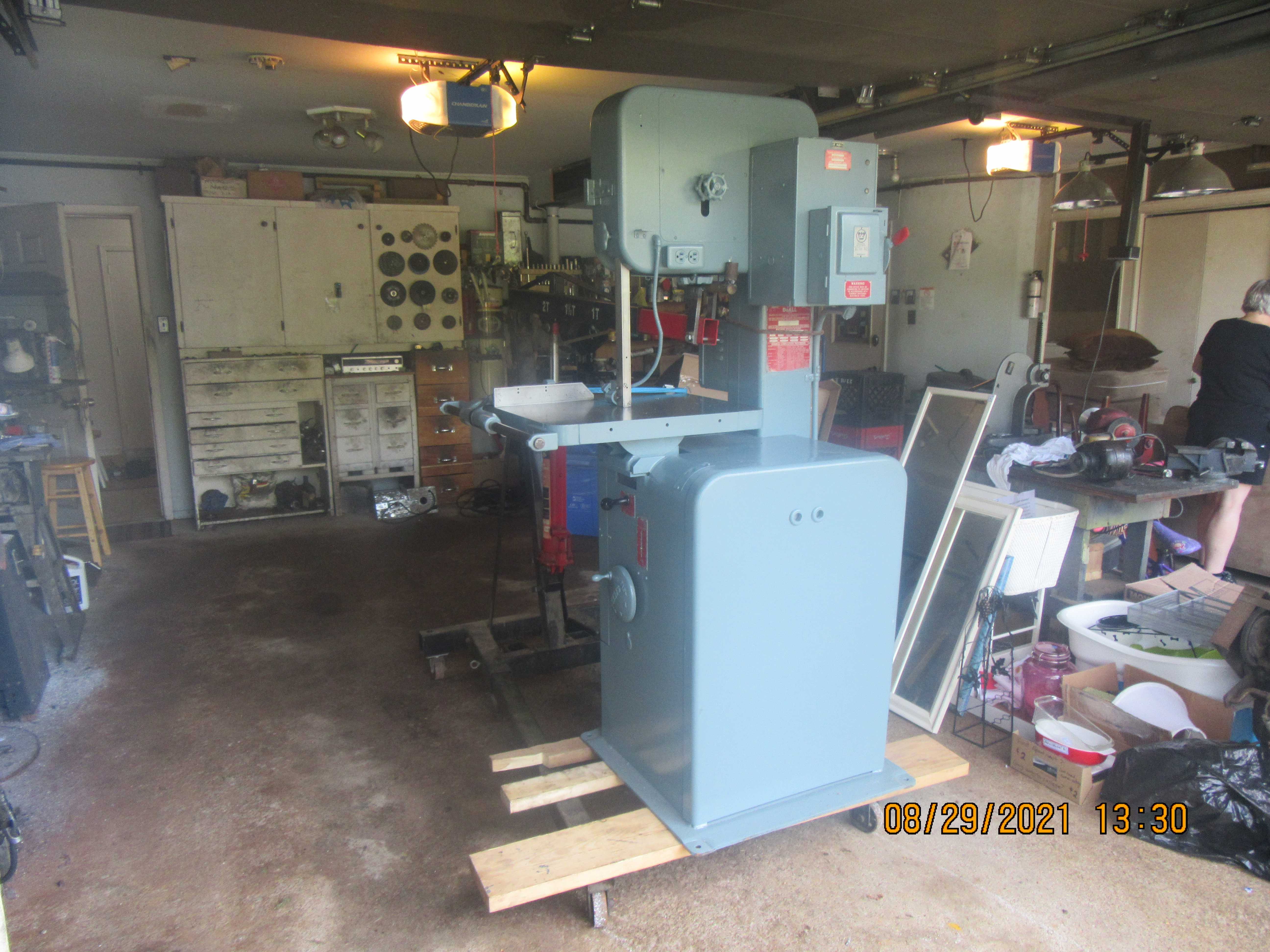Friday I drove to Toronto and bought a DoAll bandsaw and a new VFD to drive it from a used machinery dealer. It fit nicely into my F150 pickup truck, and with many tie down straps it rode happily 100 km. from Toronto to my house in Barrie. It is HUGE compared to my old bandsaw, and the tricky part was getting it offloaded from my truck. I had a really bad experience with machinery movers when I bought my lathe five years ago. I had unloaded it from my truck and called the movers. Two giant men came, moved my lathe in about fifteen minutes, and charged me $500. NOT going to do that ever again. So---Today I spent an hour welding up a machine specific device to attach to the end of my engine hoist and unloaded it by myself. Everything went fine, I didn't get hurt, I didn't damage anything on the machine, and it's in my garage. It's 90 degrees outside, and my digital camera fogged up instantly when I took it outside to take pictures. I don't know a lot about this machine yet, but the place I bought it from did turn it on and show me that it did work on three phase. I will post more about it as I learn more about it myself.---Brian




























![MeshMagic 3D Free 3D Modeling Software [Download]](https://m.media-amazon.com/images/I/B1U+p8ewjGS._SL500_.png)






![DreamPlan Home Design and Landscaping Software Free for Windows [PC Download]](https://m.media-amazon.com/images/I/51kvZH2dVLL._SL500_.jpg)











































